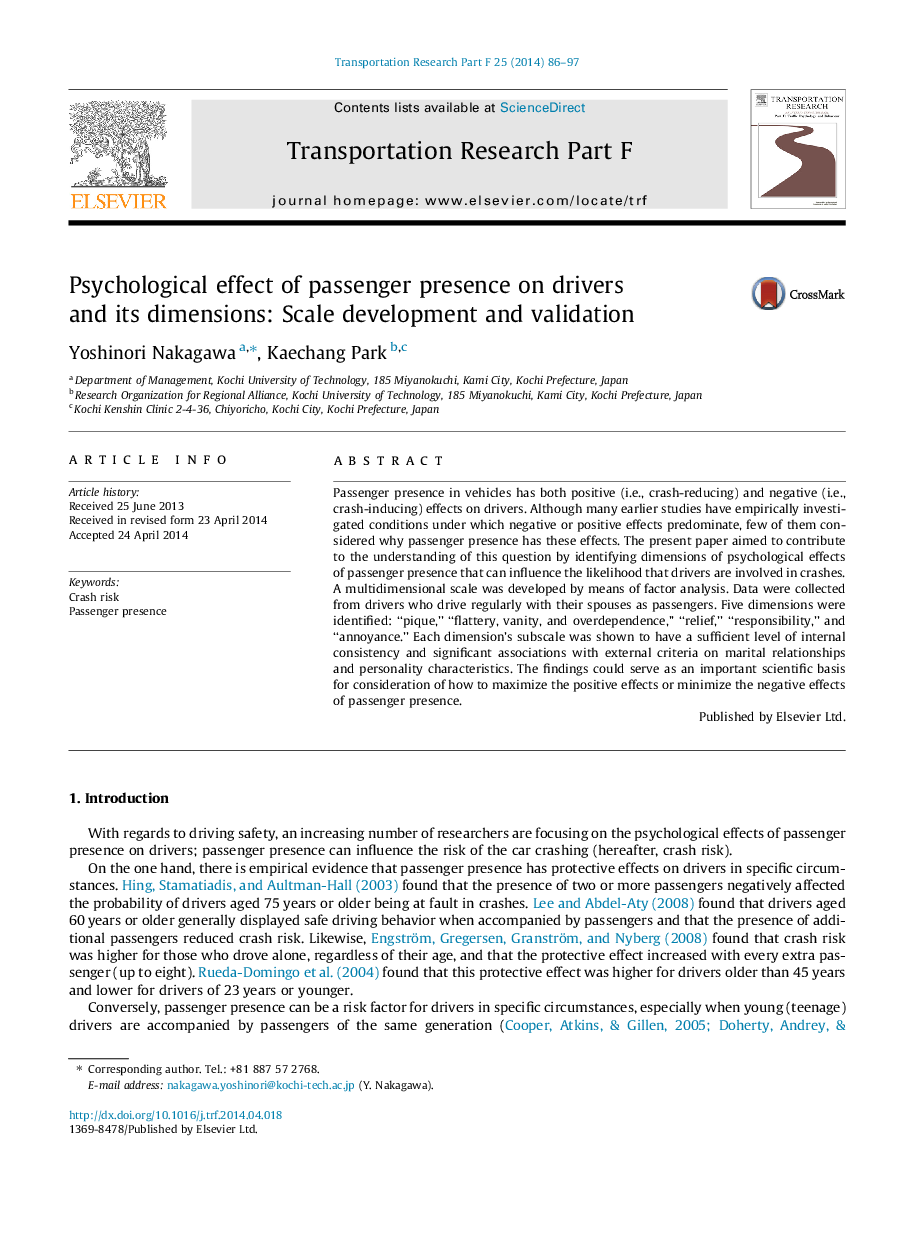| کد مقاله | کد نشریه | سال انتشار | مقاله انگلیسی | نسخه تمام متن |
|---|---|---|---|---|
| 897761 | 915192 | 2014 | 12 صفحه PDF | دانلود رایگان |
• The mechanisms underlying crash-inducing and reducing effects that passengers have on car drivers are yet to be understood.
• This paper aimed to comprehensively identify constructs of the psychological consequences of passenger presence.
• Data were collected from drivers who drive regularly with their spouses as passengers, and factor analysis was applied.
• Five dimensions were identified: “pique,” “flattery, vanity & overdependence,” “relief,” “responsibility,” and “annoyance.”
• Each dimension’s subscale was shown to have a sufficient level of internal consistency and external validity.
Passenger presence in vehicles has both positive (i.e., crash-reducing) and negative (i.e., crash-inducing) effects on drivers. Although many earlier studies have empirically investigated conditions under which negative or positive effects predominate, few of them considered why passenger presence has these effects. The present paper aimed to contribute to the understanding of this question by identifying dimensions of psychological effects of passenger presence that can influence the likelihood that drivers are involved in crashes. A multidimensional scale was developed by means of factor analysis. Data were collected from drivers who drive regularly with their spouses as passengers. Five dimensions were identified: “pique,” “flattery, vanity, and overdependence,” “relief,” “responsibility,” and “annoyance.” Each dimension’s subscale was shown to have a sufficient level of internal consistency and significant associations with external criteria on marital relationships and personality characteristics. The findings could serve as an important scientific basis for consideration of how to maximize the positive effects or minimize the negative effects of passenger presence.
Journal: Transportation Research Part F: Traffic Psychology and Behaviour - Volume 25, Part A, July 2014, Pages 86–97
